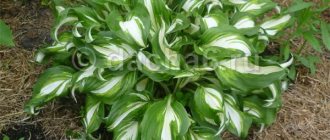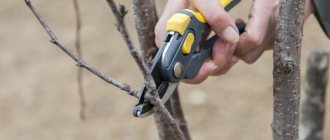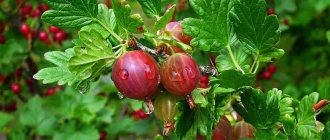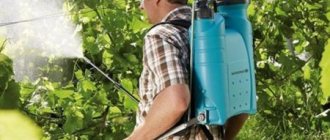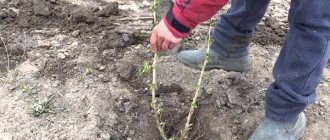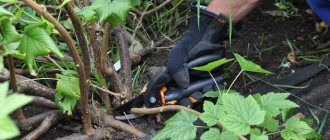You came to this material because you most likely need to either plant or transplant your strawberries to a new location, right? Essentially, this is the same thing, you need to create a new strawberry bed in one of the possible ways. To be honest, this activity is not very simple, but absolutely necessary.
Why, when and how to most correctly plant or replant garden strawberries will be discussed in this article below.
Why replant strawberries in the spring?
Three years after planting this crop, buds begin to appear on the plants, from which mustaches grow. Over time they become longer and longer, they dry out and freeze during frosts. This phenomenon leads to depletion of the main bush, in some cases it even stops blooming.
Without timely replanting, the fruits lose their appearance, the berries become smaller and the taste is significantly reduced. Further use of these plants is not advisable; the culture can only be helped by urgently transplanting young plants to a new location. You must not make mistakes during replanting, otherwise the plants will die.
In small garden plots, annual cultivation of strawberries is practiced; accordingly, the bushes are removed in the fall, and new plants are planted in their place in the spring. Using this technique it is possible for 1 sq. m to grow about 50 bushes.
We can highlight the main advantages of spring crop transplantation:
- there is a lot of water in the ground, and the air has not had time to heat up much;
- in two warm seasons the crop will have time to take root and will begin to produce a good harvest next year.
As for transplanting bushes in autumn, the main advantage is that the plants can also quickly take root, and due to frequent rains, strawberries do not need to be watered. In addition, replanting bushes in the spring means a large amount of time spent working in the garden.
Advantages of the procedure
The main advantages of spring crop transplantation:
- During the winter you can purchase a sufficient amount of fertilizer and mulch;
- there is a lot of free space in the garden, so you can choose a good and fertile place for this crop;
- the soil is not yet overgrown with weeds, so you won’t need to spend a lot of time weeding;
- the ground is sufficiently saturated with melt water, so when laying mulch, the moisture will not evaporate for a long time;
- spring is the best time for planting plants, and it does not matter whether these are only young seedlings or already formed bushes;
- the transplanted plants will strengthen well before winter.
Disadvantages of the procedure
In addition to the advantages of transplanting strawberries in the spring, this event also has a certain number of disadvantages:
- The gardener will not get a big harvest this year - accordingly, almost a year of fruiting is lost;
- when preparing the soil for transplanting strawberries in the spring, the ground begins to sag, so it is better to prepare the soil in the fall;
- the possibility of bushes freezing due to return frosts;
- the weather may be hot, as a result it will slow down the rooting process;
- strawberries require increased attention from the gardener;
- the price of strawberry seedlings in spring is more expensive than in autumn.
Transplanting strawberry bushes is the key to decent harvests
Why is there a need to replant (rejuvenate) strawberry plantings at all? The answer is simple - unfortunately, the growth of a strawberry bush, which inevitably occurs over time, negatively affects its fruiting.
And this expansion of the bush occurs due to an increase in the number of new rosettes (horns). So, in the first year of its life cycle, a strawberry bush has only one horn (aka the main root), in the second - 2-3 horns (this is the age when fruiting peaks), in the third - more than 6 horns (a noticeable decrease in yield begins ). Consequently, strawberries retain their yield in the same place during the first three years of life (although there are certain varieties that can actively bear fruit for longer, naturally, with proper care). Understanding when to plant strawberries is quite simple: the berries will become much smaller, and their number will be reduced.
So, what can we do to maintain fruiting at the same level?
In the second year of the existence of our strawberry beds, we begin to propagate strawberries. Reproduction can be carried out either by a mustache or by dividing the bush. In the third year of life, we mercilessly eliminate the overgrown bushes, or at least divide them into new ones. True, if you still feel so sorry for your old bushes that you can’t raise your hand, and besides, there is plenty of space on your plot, then the small berries of the “retired bushes” will make excellent jam, just the right caliber.
Optimal timing for transplanting strawberries in spring
Spring does not last long, but it is customary to distinguish 3 main periods when you can replant strawberries.
Early dates (after the snow melts)
In the first days of spring, you can replant a crop only if it is covered; for this, use film or plant the plants in a greenhouse. Transplant bushes with an open root system into the soil.
At the end of April and in the first half of May
The mustaches that appeared on the crop last year are transplanted to a permanent plot. Over the fall, they have fully grown and are ready for transplanting. In the spring season, you should wait a little and watch the plants. As soon as they begin to grow, it means they have successfully wintered.
To replant, dig up the bushes with a large lump of soil, leave the green leaves, remove the brown ones. The presence of greenery is not so important, the main thing is that a thick root collar and healthy roots remain.
All work on transplanting strawberries must be completed while there is still a lot of melt water in the soil, but watering is still necessary. Cover the plants with agrofibre for a while to protect the bushes from bright sun and sudden temperature changes.
The end of May
At this time, the crop grown from seeds is replanted. You can also plant bushes of greenhouse origin, because they often have a closed root system and strong foliage, and sometimes there are buds. When replanting a crop, it is better to remove the flower stalks so that the plants do not waste energy on them.
Planting methods
The location of the strawberries can be chosen based on the terrain
There are several ways to locate holes on open ground:
Planting in rows is the most popular method . The distance between plants should be 25 cm, and between rows at least 60 cm. Double-line planting of seedlings is recommended in areas with limited space. The only difference is the distance between the lines, it is 30 cm. Planting in a checkerboard pattern will require increased care and skill from the gardener. First, in order not to make a mistake, you need to mark the locations of the proposed holes.
Each gardener chooses the optimal location of the bushes based on his personal preferences. The main thing is to maintain minimum distances so that plants do not interfere with each other’s proper growth and development.
What are the ways to transplant strawberries?
There are only three options for transplanting strawberries. You should choose the one that suits you the most. Let's look at each of them.
Rooted mustache
Before rooting the mustache, take a closer look at the plants you already have, choose the strongest and most productive ones. Take no more than 4 tendrils from the plant and remove the rest. All flower stalks should be removed from bushes that act as a “parent” to other plants and not allowed to bear fruit anymore.
How to propagate strawberries with a mustache:
- Destroy all flower stalks.
- Select only the first rosettes on strong tendrils. Under them, place glasses filled with soil or humus in the soil.
- Place the rosette in the middle of the pot or glass. Secure the socket on both sides with a wire loop.
- Trim the tendril that does not connect to the “parent” bush.
- Water glasses with rosettes regularly (1-2 times a day).
- As soon as the roots fill the glass and about 5 leaves appear (about 40 days), the bush can be separated from the “parent”.
- Transplant the seedling to a new area, but first remove it from the soil and trim its own tendrils.
Using this method, the result is 100%, all bushes take root and are not damaged.
Dividing the bush
Algorithm for transplanting strawberries by dividing the bush:
- Remove a strong bush of the crop from the ground along with a large lump of earth. Just do everything carefully so that the root system is not damaged.
- Place the bush in a large container, destroy old and dry shoots and leaves.
- Free the root system from the soil. Place the plant in a bowl filled with water. This method will help free the plant from the ground faster.
- During the soaking process, the plant will begin to divide on its own; the gardener only needs to help it. Separate the horns that could not separate on their own with a knife.
- In each separated plant, remove excess leaves, leaving only 3 main leaves on 2 stems. Also get rid of flower stalks and dark roots.
- For better survival of the bushes, treat the roots in a solution of Fitosporin. Use Kornevin to improve bush growth.
- Transplant the bushes into open soil or you can grow them a little, and then plant them in different pots.
Seeds
Please immediately note that hybrid strawberry varieties do not propagate by seeds. Only varietal plants can be grown in this way.
Advantages of propagating strawberries using the seed method:
- the bushes turn out healthy and strong;
- high productivity;
- the opportunity to grow exactly the berry that you like;
- there is a chance to grow strawberries without strawberries.
Algorithm for planting strawberries from seeds:
- Choose a large berry and dry it.
- Select the pulp from the center of the fruit - this is where the seeds are the largest.
- Carefully wipe the dried pulp with your hands and select the seed material. It can be stored for about 2 years in a glass container.
- Prepare the seed and pots with soil.
- Plant 2-3 seeds in each pot.
- Grow the seedlings and transplant them into open soil.
Benefits of growing strawberries with whiskers
Planting with mustaches is a universal propagation method that helps gardeners solve several problems at once. Without spending money on buying seedlings, you can renew your berry gardens, breed a variety, or plant new areas.
Advantages:
- no special container is needed for growing seedlings;
- there is no need to sow seeds in the ground or grow seedlings;
- no special room (greenhouse, greenhouse) is required to grow seedlings;
- you don’t have to spend money on purchasing planting material;
- seedlings take root quickly and well;
- varietal characteristics are completely preserved.
It is possible to propagate even hybrids that, as is known, do not transmit their varietal characteristics through seeds.
Features of transplanting strawberries to a new place in spring
Strawberries need to be replanted in a lighted place, well fertilized and treated. During transplantation, you should adhere to the basic requirements so that the crop is not damaged or killed.
Site selection and preparation
How to prepare a new plot for strawberries:
- Completely clear the area of weeds.
- Water the soil with Fitosporin and let the soil sit for about 1-2 days.
- Loosen the soil.
- Scatter the ash so that it completely covers the area of the ground; often 1 liter of can of ash per 1 square meter is enough. m. Instead of ash, you can use potash fertilizers, for example, per 1 sq. m. m – 20 g of potassium sulfate.
- Next, add Superphosphate (50 g of product per 1 sq. m).
- Pour 6-7 kg of rotted manure or humus per 1 square meter. m.
Summer residents advise, after fertilizing, to dig up the soil onto the bayonet of a shovel so that the fertilizing is mixed.
Avoid using Superphosphate if you have acidic soil.
Selection and preparation of planting material
Before planting bushes in the ground, inspect the plants for various damages. A clear sign of sick strawberries is the absence of green foliage; the reason for this phenomenon lies in the death of the plant’s root system. You should also avoid replanting a crop whose foliage appears weak and dull.
Remove bushes with obvious signs of rot or various diseases so that they do not harm healthy plants.
Transplant procedure: step-by-step diagram
Algorithm for transplanting strawberry horns:
- Choose a site for growing crops and fertilize it.
- Dig shallow but wide planting holes. Their size depends on the size of the root system.
- Water the indentations well.
- Carefully place the plant in the hole and dig it in.
Rules for transplanting (planting) strawberry seedlings and answers to frequently asked questions
Below you can find out answers to pressing questions about the correct transplantation (planting) of strawberry seedlings.
When is the simplest transplantation of strawberries (without propagation and division of the bush) to a new place carried out?
In the spring before flowering (before the flower stalks are thrown out) or at the end of summer-autumn (2 weeks after the end of fruiting).
How to move a bush from one place to another:
- Remove old leaves (dark green) with spots, and you can also trim the leaves additionally (so that less moisture evaporates)
- Trim the mustache (if replanting in summer-autumn)
- Prepare a large hole for planting according to the size of the earthen ball and water it generously.
- Dig up a bush along with a lump of earth and take it directly with a shovel to a new place, carefully lowering it into a wet hole.
- Lightly water.
- If desired and necessary, mulch.
Video: transplanting strawberries to a new place - expanding strawberry areas by planting thickened plantings
Preparing the bed (soil) for replanting
To prepare a new place (soil) for transplanting strawberry bushes, you will need:
- Try to completely rid the garden bed of weeds.
- Sprinkle with Fitosporin (for disinfection) and let it stand for a couple of days (or this can be done after planting).
- Immediately before planting, loosen.
- Scatter wood ash so that it covers the entire area with a thin layer (200 grams per 1 square meter), or a similar potash fertilizer (for example, 20-30 grams of potassium sulfate).
- Then add superphosphate (30-40 grams per 1 square meter).
- Pour in excellent humus and compost (6-8 kg per 1 square meter).
- Some gardeners recommend digging up the garden bed using a spade to mix fertilizers with the soil, while others (as in the video below) advise planting directly on top of the fertilizer layer.
Is it possible to replant flowering garden strawberries?
Yes, it is possible, but it is recommended to remove all flower stalks without fail, so that the plant does not waste extra energy, but concentrates on the survival of the roots in the new place. But still, it is better to carry out all propagation procedures either before flowering (before the flower stalks are thrown out) or after the end of fruiting (after 2 weeks).
However! You can also replant flowering strawberries (but only young bushes), but you must preserve the earthen ball (transfer the bushes directly with a shovel). In this case, the strawberry bushes will not notice anything and will continue to bloom. But if the roots are exposed during transfer, then soon they will drop the flowers themselves and begin to hurt...
Is it possible to replant (plant) strawberries in their old place?
Yes, you can, especially if you treat (spill) the bed with a solution of Fitosporin (to disinfect the soil).
But still, it is better to change the location of the bed every 3-4 years and plant garden strawberries after onions and garlic, carrots, beets, radishes, legumes, green manure .
At what distance to plant
It is most convenient to plant strawberries according to the most standard scheme: 60-70 by 25-30 centimeters (ribbon in 1 row or rows). But there are different methods of planting - both simpler (solid carpet) and complex (ribbon in several lines).
Planting under black covering material
This material is a black film with a thickness of 100 microns. Thinner material cannot be used, otherwise weeds will be able to seep through it.
Planting algorithm under black covering material:
- Place this material on the beds, press the edges with bricks and cover with soil.
- Make slits in the black material, and dig holes under them, plant strawberry seedlings in them.
- Be sure to remove the tendrils from the plant, otherwise they will take root under the film, and then it will be very difficult to tidy up the plantings.
This material is removed for the winter.
Summer residents are confident that black covering material helps increase the amount of strawberry harvest. This is due to the fact that the covering material quickly heats up from the sun's rays, and this significantly accelerates the growth of berries. The only disadvantage of such a system is inadequate watering. The slots are very small and moisture does not penetrate well to the root system.
Care requirements
After transplanting strawberries to another place, it is important to provide timely and proper care, which will ensure rapid rooting and intensive growth.
Watering
Before the onset of the first autumn cold weather, the bushes are often moistened so that the roots have time to take root - once every 5 days. Provided that the autumn turned out to be dry.
The last watering is carried out 3 weeks before frost.
You can also irrigate the leaf to saturate the aboveground part with moisture. Spray once every 10 days.
Loosening and mulching
Loosening saturates the roots with oxygen
After each moistening, the soil is loosened to ensure good access of moisture, oxygen and nutrients to the root system. This is done carefully, between the rows, and not too deep, so as not to damage the surface roots.
Additionally, add mulch from peat or garden soil, which will protect against rapid drying out of the soil and prevent the growth of unnecessary vegetation in the garden bed.
In order not to resort to these procedures, many gardeners plant strawberries on agrofibre. This material has several advantages - it creates protection against drying out of soil roots, slows down the development of weeds, and prevents the appearance of pests and diseases on the root system.
Feeding
Fertilizers for bushes transplanted in autumn are not needed, because plants begin a dormant period closer to winter.
The only thing that can be done is to spray the bed leaf by leaf with a solution of potassium permanganate (50 g), ammonium molybdate (2 g) and boric acid (15 g) in a bucket of water. This fertilizing will provide strawberries with good winter hardiness.
Prevention of pests and diseases
To protect against parasites that usually live in the upper layers of the soil, it is necessary to spill the loosened soil with a solution of karbofos (3 tablespoons of substance per 10 liters of water).
Immediately after the procedure, the bushes should be covered with film or agrofibre for three hours. This will enhance the effect of the pesticide. After this time, the shelter is removed.
Additionally, it is worth carrying out preventative treatment with non-toxic home remedies. Mix vinegar, liquid soap, wood ash in one container - 2 tbsp. l. Add 3 tbsp to this mixture. l. vegetable oil. Stir, add 10 liters of water. The working solution is sprayed on the bushes and the soil underneath them.
Caring for strawberries after transplanting in the spring
Care should always be thorough, but in general it consists of regular watering. After transplanting the crop, the bushes are watered daily for several weeks. But you should not fill them, especially if you have made a high-quality mulch layer.
2 weeks after transplanting, water the plants as the soil dries. In the first year, there is no need to apply additional fertilizers, since during replanting you have already nourished the soil. You will get your first strawberry harvest only next year, so you will have to be patient.
Caring for young plantings
Rosettes planted at the end of summer must be cared for until the cold weather. During this time, they will have time not only to take root, but also to grow a little.
How to care for strawberry seedlings:
- Cover the beds with transparent material. The shelter protects the plantings not only from rain, but also from the sun - it can damage young plants.
- Water your strawberries regularly, preventing the soil from drying out. Watering rate is 1 liter of water per bush. After watering, loosen the rows, removing weeds at the same time.
- To prevent the evaporation of moisture from the soil, mulch the rows with peat, humus, and sawdust. This will save time and effort on weed control - mulch prevents their growth.
- A month after planting, fertilize. Apply potassium sulfate or any complex fertilizer for berries. Then carefully hill up the bushes (this promotes the formation of roots).
- Insulate the strawberry beds for the winter. For example, pine needles - they protect against frost and allow air to pass through.
When caring for strawberry seedlings, it is necessary to take into account current weather conditions. If planting is done closer to autumn, it may begin to rain and there will be no need to water the beds (if the shelter has already been removed by that time).
Popular mistakes
Often, even experienced gardeners make mistakes when transplanting strawberries; let’s look at the most important ones:
- Planting too early. As a result, the roots die from frost, and the plants no longer recover.
- Transplanting unprepared seedlings into open ground. If the bushes grew in good conditions, then wait for stable warm days or make a reliable shelter for the seedlings.
- Using polyethylene film as a covering material. Because of this, plants often suffer from overheating.
Common mistakes
Reproduction by mustache is a simple method at first glance. But it has many subtleties that gardeners do not know about, forget or neglect.
Mistakes when breeding with a mustache:
- Early mustache trimming. If you rush to separate the rosette from the mother bush, it does not have time to form a developed root system.
- Uncontrolled mustache growth. If too many rosettes form on a bush, they turn out small and underdeveloped. They are not viable and take a long time to take root in a new place.
- Repeated transplants. If you transplant rosettes several times from place to place, their roots are damaged, the bushes weaken, take a long time to take root and do not tolerate winter well.
- Planting in heat or rain. Transplanting seedlings in rainy weather leads to the development of fungal diseases and other infections. In the heat, the plant weakens and its immunity decreases.
- Unprepared soil. Strawberries need loose soil with a neutral pH to grow. If you plant seedlings in soil that is not properly prepared, they will be weak, will not produce a good harvest, or will not take root at all.
An experienced gardener will tell you about two methods of propagating strawberries with a mustache in his video:
By propagating strawberries with a mustache, the gardener not only expands and renews the berry garden, but also lays the foundation for the future harvest. The future productivity of new bushes depends on how correctly the mustache transplant is carried out.
0
0
Copy link
Useful tips for beginning gardeners
Some recommendations from experienced summer residents will help you replant strawberries safely and get a rich harvest from them in the future.
A few top tips:
- After transplanting into open soil, do not fertilize the strawberries at all for several months. The bushes must fully take root and adapt to the new place.
- Follow the rules of crop rotation, never plant a crop in an area where strawberries grew. Peas, celery and carrots are also considered enemies of the crop.
Proper replanting to a new location is what strawberries lack for good yield and improved taste of the fruit. Take a closer look at the methods of transplanting crops, and choose the option that will be best for the plants and suitable for a particular region.
When to transplant in the fall, in what month
When choosing the timing for transplanting strawberries, you need to take into account the climatic conditions of the region: the duration of the warm season, the frequency of precipitation, the onset of the first frost. In any region of Russia, strawberries are transplanted into open ground 1 month before the first frost.
From the moment of transplantation, young bushes must have time to take root and become stronger in order to produce a bountiful harvest in the future.
In outskirts of Moscow
In the Moscow region, strawberries are transplanted to a new place from August 15 to September 30.
Plants are planted both in open ground and under agrofibre and black film. This planting allows you to get an earlier harvest of berries in the future.
Planting dates may vary depending on weather conditions in the current year. The main thing is that the plants have time to take root before the first frost, otherwise they will die.
In the Urals
The optimal time for transplanting strawberries in the Urals is considered to be the period from August 15 to September 15.
Plants are planted in different ways. By planting plants under black film or agrofibre, in the spring an earlier harvest is harvested (1.5-2 weeks ahead of schedule).
When planting strawberries in open ground, the plants are covered with a film during frequent rainfall.
In Siberia
In Siberia, strawberries are transplanted from late July to mid-August.
When planting later, plants are planted under covering material or in a greenhouse.
In the Leningrad region
In the Leningrad region, strawberries are transplanted from mid-August to mid-September.
In order for the plants to take root faster, they are covered with agrofibre. The material allows moisture to pass through and retains heat, which are the basic requirements for plant rooting.
How best to root
Rosettes are rooted in two ways:
- in plastic cups or disposable containers that can be cut during transplantation;
- directly on the garden bed.
In the first case, the rosettes formed on long whiskers are placed in disposable containers with drainage holes. The containers are treated with a dark solution of potassium permanganate and filled with a nutrient mixture of fertile leaf soil and humus. You can use a composition of equal parts of garden soil, compost, and sawdust. The structure of the soil substrate should remain loose.
Before starting work, moisten the soil mixture, make a hole in it, where the strawberry rosette is placed. Since the mustache remains attached to the mother bush, planting containers are buried next to it and deepened to 1/2 the height of the cup.
To root rosettes in the soil without using individual planting containers, shoots are pinned to the ground. The ground is first loosened, peat, sawdust and sand are added in advance. They also make a hole in the soil and place a rosette. The air shoot is sprinkled with a thin layer of soil; the central part of the rosette should remain above the ground.
Both types of seedlings need daily monitoring; the soil substrate should not be allowed to dry out. Watering should be moderate to prevent rotting of the developing root system of seedlings.
Remontant raspberries: care and cultivation
Timing for planting new bushes
15 days before transplanting the strawberry rosettes, the daughter plants are separated from the central plant. During this time, young strawberry bushes should completely switch to their own nutrition, and the process of formation of root suction hairs will accelerate. When cutting, use sharp garden pruners. The incision is made in such a way that 2/3 of the air layer remains near the mother plant, and a piece of mustache 2-3 cm long remains near the young rosette.
If a young bush, after being separated from the mother bush, begins to fade, shade it and continue to water it. During transplantation, the condition of its root system is checked; perhaps pests or rot have settled in the roots. Such seedlings are discarded. The remaining seedlings are left with 3-4 healthy leaves.
Rooting of rosettes should be completed by the end of July or beginning of August. After all, it will take at least 25 days for plants to take root in new beds. In warm regions there are no frosts in September, so the timing of planting rosettes cut from the mother plant may be delayed until mid-September; in colder climates with early frosts, rooted rosettes begin to be replanted in mid-summer.
How often to water strawberries
Choosing a site for planting strawberries
The best place for growing strawberries is the southwestern part of the plot with a slight slope to prevent moisture stagnation. The groundwater level in the area should be no higher than 80 cm. A small elevation will protect the roots from rotting, which may appear in early spring after the snow melts.
The selected area should be sunny, but not blown by strong through winds. A sufficient amount of sun will not only produce large berries in large quantities, but also make them sweeter.
Planting rooted mustaches
Strawberry planting rosettes with a closed root system, grown in individual disposable containers, are planted by transferring from a cup to a hole in the garden bed. The soil in the cup is moistened several days before the start of work, then the cup is squeezed with hands so that the lump of earth does not crumble, and the plastic is carefully cut. The root is placed in the hole.
Rosettes that grew in the soil next to the mother plant cannot always be dug out of the bed without damaging the earthen ball - the roots of the plants are left without soil. For better engraftment in a new place, they are placed in a honey rooter for 2 hours (1 teaspoon of natural honey / 1 glass of clean, non-chlorinated water).
The ends of the suction roots are cut to 5 cm in length and planted in the hole. When placed in a hole, the roots of the plant should not bend or protrude from the hole. Pour 0.5 liters of water under each planted strawberry bush, wait for the soil to settle, and press it down with your hands. The central part of the outlet should not be below ground level.
